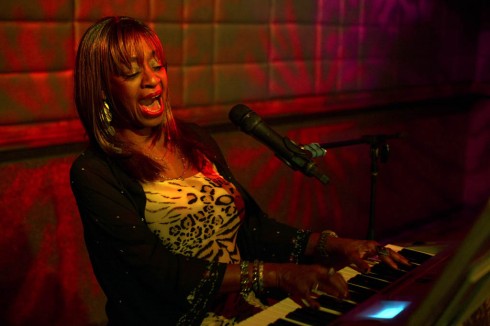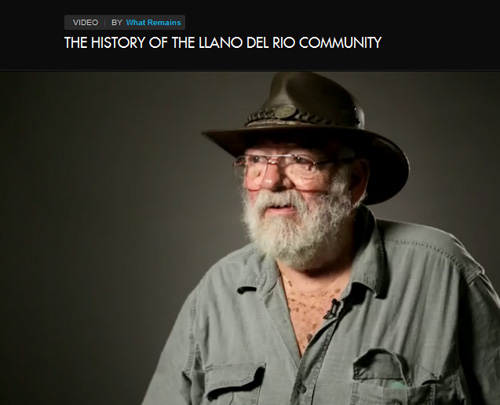Humanity: Caught in a Progress Trap, Again
A Short History of Progress. Ronald Wright. Philadelphia: Da Capo Press, 2004. 211 pp.
Leslie Evans
Generally I don’t pay attention to very short books that try to trace the entire history of the human race, and worse, present the author’s pet theory of why we are now on the verge of collapse. Ronald Wright tackles this daunting task in an undersized binding, 8 X 5.5 inches, and a text before notes and index that runs to only 132 pages in a generous sized type. Still, he has an ear for the mot juste, a sure sense for the revealing anecdote, and a theory that, even in this highly abbreviated presentation, rings true.
The theory is the progress trap. The first great progress trap was the invention of spears and bows and arrows for hunting. The earliest stone tools date back three million years, at the dawn of the Old Stone Age, which lasted until the most recent retreat of the Ice Age glaciers 12,000 years ago. The revolution in hunting weaponry, which Wright suggests may also have been used to exterminate our closest hominid relatives, solidified around 15,000 years ago. By that time humans were established on all the continents exceptAntarctica. Read more
THE STORY OF AN AMERICAN JAZZ MUSICIAN
Sonji Kimmons (photo by Susan McRae)
By LIONEL ROLFE
I see my friend Sonji Kimmons as kind of a metaphor for this country’s relationship to its collective soul. Sonji grew up in South Los Angeles–her mother was a nurse at the County-USC Medical Center. She sang gospel in church and when she was 13 cut some of her own 45s with Dot Records, one of the archetypical Blues music labels. It wasn’t until she got to Europe that she forged a really good concert career as a jazz pianist and singer. She’s been back in Los Angeles since just before the turn of the Millennium. She returned because her mother was sick. But of late she’s developing an obsession–it’s time to return to Europe where she was treated as the real artist that she is.
America has a history of allowing Europe to recognize its greatest talents first. The greatest American writer of all times, Mark Twain, was dismissed as little more than a humorous newspaper columnist and raconteur of the California Gold Rush. It was the English who first realized his importance. Read more
Lionel Rolfe in AOL Video on the Llano Del Rio Socialist Colony
Lionel Rolfe is interviewed on AOL’s online local history video series What Remains. Rolfe is coauthor with Nigey Lennon of Bread and Hyacinths: The Rise and Fall of Utopian Los Angeles, which offers a history of the utopian colony that flourished in the Southern California desert during World War I. His interview, interspersed with historic photos, shows us Job Harriman’s Llano Del Rio utopian socialist community, set in the Antelope Valley between 1915 and 1918. Harriman had run for U.S. Vice President on the Socialist ticket with Eugene V. Debs, and was narrowly defeated for Mayor of Los Angeles in 1911. His Llano Del Rio community at its height had some 1,000 residents who lived a communal life and had homes and jobs provided by the community. It was located in the desert east of Palmdale.
Watch the video here.
An Elusive Utopia By The Sea
By LIONEL ROLFE
Venice, CA: A City State Of Mind by John O’Kane. Hard cover edition is $26.95.
The traditional happening places for the arts in Los Angeles are two–and it’s been this way since the ’20s and earlier. One is Echo Park near downtown and the other is Venice by the sea. But Venice has captured more of the romance, perhaps because its history has been rich and porous enough there’s this terrible tendency to want to sum it all up, to say what exactly it means. Read more
A NEWSROOM SERIOUSLY RUN AMOK
By Bob Vickrey
After watching a recent episode of the entertaining, but often maddening HBO series, “The Newsroom,” I decided that someone on that staff needs to empty the office fridge of its 5-Hour Energy drinks and brew up a big pot of decaf. No, make that several pots of decaf!
The friends I hang out with simply do not converse in the rapid-fire staccato cadence that the characters on this show engage in. Either start that decaf brewing soon, or have the producers of the show provide me with some helpful subtitles at the bottom of the screen.
Creator Aaron Sorkin’s smart, but smugly self-congratulatory series is presently airing in its second season. As with his previous work, he’s captured a big audience and considerable acclaim. The series chronicles the behind-the-scenes events of the fictional Atlantis Cable News (ACN) channel. Sorkin’s characters seem to be constantly reminding us of how smart, witty, and acerbic news people are. When the show slows to a comprehensible pace, it becomes one of the most compelling and thoughtful series on television. But the tiring dialogue, infused by its forced frenzy, gives it a staged and choreographed appearance.
Read more
New Boryanabooks title: Leslie Evans’ “More from the Shaggy Man”
Boryanabooks is pleased to announce the publication of a new essay collection by its regular contributor Leslie Evans. Titled More from the Shaggy Man, it is now available in paperback from Amazon.com.
 More from the Shaggy Man: Essays by Leslie Evans. Los Angeles: Boryanabooks, 2013. 386 pp. $13.25.
More from the Shaggy Man: Essays by Leslie Evans. Los Angeles: Boryanabooks, 2013. 386 pp. $13.25.
Order Here from Amazon.com.
On sale now from Amazon for $12.19
Below is the Preface from More from the Shaggy Man.
* * *
Here in this second Shaggy Man collection are fifteen essays written between May 2012 and August 2013. They appeared first on The Shaggy Man’s Place (www.shaggman.com) and on my publisher’s website, www.boryanabooks.com, as well as one from the socialist journal Against the Current. They range from the rightward evolution of the Republican Party to recent discoveries about the ancient Jewish religion known as Gnosticism.
“On the Track of the Elusive Baron Long” offers the only extensive biographical sketch of one of Southern California’s most fascinating characters. I became interested in Baron Long from having written previously on the history of the little industrial city of Vernon just southeast of downtown Los Angeles. Surprisingly for a tiny town with virtually no residential district, composed of slaughterhouses, factories, and warehouses, Vernon before Prohibition hit in 1920 was the nightlife capital of Los Angeles. Two institutions were the cornerstones of its appeal: Jack Doyle’s Saloon and its adjacent boxing arena, and Baron Long’s Vernon Country Club. The Country Club is reputed to have been the first real night club in America, combining a restaurant with an orchestra and floor show. The Baron, as he was always called, was for years the bête noir of the Los Angeles Times, before he struck it rich with a string of night clubs, became part owner of the U.S. Grant Hotel in San Diego, then of the world class Agua Caliente hotel and racetrack in Tijuana, finally ending as the owner of the Biltmore Hotel. Read more
A CELEBRATION OF GEORGE DUKE, A GREAT MUSICIAN AND GOOD GUY
By LIONEL ROLFE
The death of keyboardist George Duke at 67 last week brought back memories of the ‘70s when I smoked dope with him nearly every day.
I had hooked up with Nigey Lennon, to whom I would be married for about a quarter of a century, and I used to go with her to Frank Zappa’s rehearsal space on Sunset Boulevard near Bronson Avenue where Zappa’s Mothers of Invention worked on such albums as “Roxy and Elsewhere” and “Over-Nite Sensation.”
It was a cavernous airplane hangar-like building, a former movie sound stage which oddly enough I had worked in some years before when I was a teenage gofer on a movie about Rosa Parks. Now the space had the feeling of a night club, with an obnoxiously loud sound system and lots of blaring spotlights. Dead center on the stage, haloed by the main spot, was Frank’s chair, where he chain smoked Winstons and guzzled endless cups of 40-weight coffee from a Shop Vac-sized thermos pot. When he wasn’t playing, he was tyrannizing the musicians, which bothered me because I was used to the much more genteel and civilized way great classical musicians work together. Read more
A Deep Melancholy That’s Not Just Personal
By LIONEL ROLFE
A couple of days ago I was in a deeply melancholic state because of various personal struggles, including health and financial issues and an ex-wife I still love, but it all is leavened with the sense that as one approaches the end of life, the world becomes a much more apocalyptical place.
Sitting here in Los Angeles, I gazed at recent photographs of Nelson Mandela in South Africa wearing a kind of a beatific smile. It left me wondering if he really felt that sanguine about the planet he is leaving soon. I pondered these matters in part because it evoked some powerful links in my own life.
Mandela, as we all know, was a compatriot of another great Apartheid leader–Archbishop Desmond Tutu, who I saw in 1999 at Westminster Abbey in London at a memorial for the violinist Yehudi Menuhin–who also is my uncle. Read more
Tom Paine, A Professional Revolutionary
By LIONEL ROLFE
Alaine Lowell lived through the revolutionary ’60s — a young woman born of the counterculture and intent on experiencing the time-honored odyssey of finding one’s self.
Lowell was a product of those more free-thinking and open-minded times and still firmly held onto those values by the late 1970s, which made her budding friendship at that time with George Holtz, a Republican real estate entrepreneur more than 35 years her senior, somewhat uncommon.
The two met while Lowell was living in Castle Green and Holtz was a member of the historic structure’s board of directors. Their relationship was “never romantic,” Lowell explains. They were friends and business associates through the Old Pasadena landmark she lived in and he helped oversee. Read more
BRIAN BANKS: THE SUCCESSFUL RECLAMATION OF A LIFE
By Bob Vickrey
The Atlanta Falcons’ recent signing of an unproven linebacker would normally not command much media attention, but the circuitous route Brian Banks has been forced to travel in order to have the opportunity to play professional football is truly a remarkable one.
The well-documented story of the talented Southern California high school football player who was on the verge of college stardom, but wrongly convicted of rape, is one that has riveted the nation—not just the sports world. Perhaps it offers us a cautionary tale about the inherent biases of our legal system against defendants who are unable to provide witnesses in their own defense and the ensuing imminent rush to judgment that often prevails. Read more









